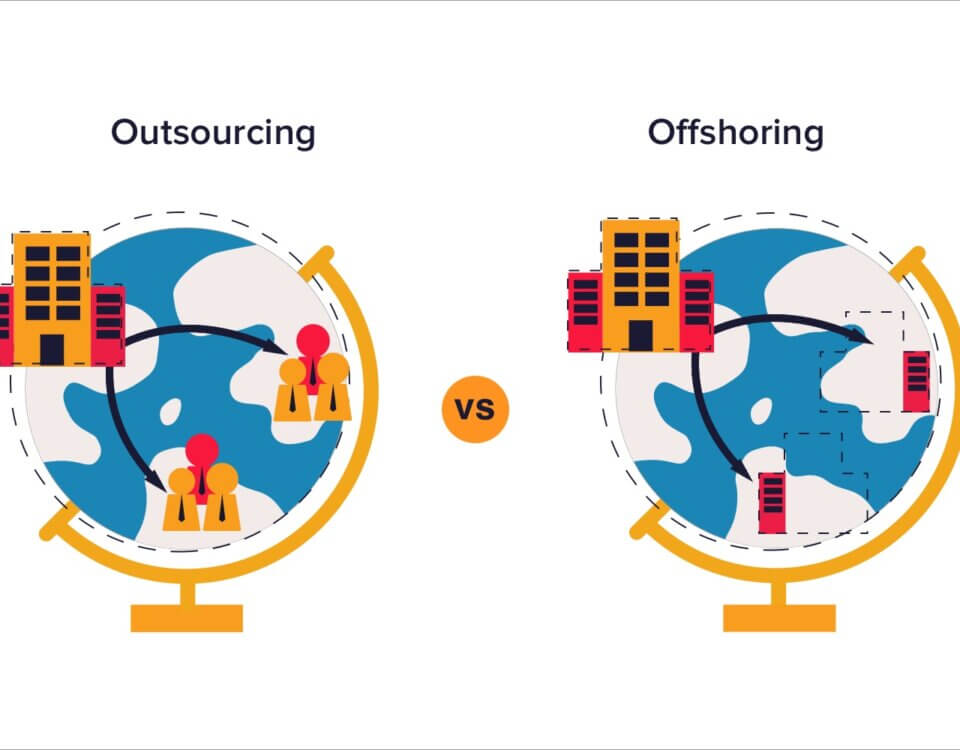
[Infographic] HubSpot vs. Salesforce vs. Zoho: An In-Depth Comparison of the Most Popular CRM Tools
September 18, 2020
Top 10 Asian Countries to Outsource Your Software Development
September 29, 2020A Beginner’s Guide to Web Applications
Today's challenging times have made the internet one of the most sought after avenues in doing business and personal transactions, including paying bills and purchasing goods and services online. As of 2020, about 4.79 billion people worldwide use the internet. High internet usage means that web application development is now a vital investment for your business because it allows you to interact with customers, cooperate better with employees, and effectively store and handle data.
What is a web application?
Web applications are present in almost all websites and we have probably used one without even realizing it! Web application development cycles are often short and can be developed with small teams.
In simple terms, a web application is a computer program or software that utilizes web browsers and technologies to perform specific tasks on the internet. It can be as simple as an E-commerce order form or as complex as a mobile gaming app that you can download to your phone.
A web application has two main programming - the client-side and the server-side.
Client-side programming aids in building an application's front-end, using client-side scripts such as JavaScript and HTML. Its main function is to present information to end-users. Meanwhile, server-side programming utilizes server-side scripts, such as PHP and ASP, to manage and retrieve data.
How does a web application work?
For a web application to operate, it needs to have 1. A web server that handles the requests made by users; 2. An application server that performs the requested task; and 3. A database that stores all information.
A common web application process flow consists of the following steps:
A user makes a request to the web server through a web browser or the application's user interface. For example, an individual might want to check if there are office chairs for sale on an E-commerce store.
The web server submits the user's request to the appropriate application server.
The application server then performs the requested task and generates the results. Following the example given, the application server will collate all information about office chairs.
After processing the requested data, the application server sends back the results to the web server.
Finally, the web server responds with necessary data that appears on the user interface. By the end of the process flow, the individual can now see all office chairs available on the E-commerce store.
Examples of web application
Web applications can be designed for numerous purposes and a wide range of audiences.
Examples of web applications include E-commerce shopping carts and order forms, spreadsheets, file conversion, and scanning apps, as well as e-mail programs such as Yahoo and Gmail. "New generation" web applications, such as G Suite (formerly called Google Apps) and Microsoft 365, have also become popular among users.
Interestingly, there are also web applications that have been developed to handle functions even without a server access. A good example of this is Google Docs that acts as both word processor and file storage in the cloud. Another key feature of Google Docs is that it enables users to download a document onto a personal hard drive.
As the needs and preferences of various markets evolve and the number of mobile web users continues to grow, most web applications have also adjusted their designs and scalability to ensure compatibility with mobile apps that connect to the internet. This is true for most social media sites, as well as E-commerce stores and mobile banking apps. Even though purchases can now be done on mobile apps, more people still prefer to do transactions from web applications, particularly in front of a desktop screen.
Success stories
Some of the most popular social media apps and streaming platforms utilize web applications to continuously improve their branding and customer experience.
As one of the most well-known image sharing mobile apps, Instagram receives thousands of API requests daily and has focused on maintaining its back-end web application with reliable technologies. Their strategy is to keep their web application flows simple and effective. They also advised to stick to proven steps guaranteed to provide users with quality service.
In a previous blog post, Instagram’s engineering team shared that its operating system runs Ubuntu Linux 11.04 (“Natty Narwhal”) on Amazon EC2, while its application servers run Djangoon Amazon High-CPU Extra-Large machines. Data storage, such as user information, photo metadata, and tags, lives in PostgreSQL.
Additionally, Instagram users often share photos on other social media sites, such as Facebook and Twitter, and real-time subscribers get notified every time a new photo is posted. These tasks are forwarded to Gearnman, a task queue system that is written at Danga. According to Instagram’s engineering team, making their processes asynchronous through the task queue means that uploads can be done quickly while other functions run in the background.
Spotify
Spotify streams millions of songs around the world, which presents a great challenge of handling tons of load daily.
For the Spotify engineering team, their back-end web application can effectively function with autonomous development squads that could work together or independently of other groups. Any architecture that needs to manage the volume of Spotify users divide a problem in various ways, including partition by features. In this particular scenario, a specific squad is in charge of all the features and physical screen area of all pages and views of users. The squad takes care of all the features across all platforms, which include API on a mobile device or web browser through clients’ real-time requests managed by Spotify’s back-end team, and the batch-oriented data crunching that happens in a Hadoop cluster to power other features such as radio, search, and recommendations.
Most of Spotify’s features, including playlists and the “follow” function, require meticulous storage and back-up. For each feature, a squad will also have to build a storage solution that fits the needs of a specific service. Spotify infrastructure has various options for storage, including Cassandra, PostgreSQL and memcached.
What are the advantages of a web application?
A web application can be easily installed, customized, and maintained, providing flexibility and all-around access for your stakeholders. It also gives higher levels of security because unlike desktop-based software that can be physically destroyed or stolen, a web application has data storage and backup that ensures business continuity.
It is also more efficient and cost-effective to have a web application for your business' website. Since web applications can run on various internet browsers (ex. Google Chrome or Firefox) or platforms (ex. desktops, laptops, and even mobile apps), there would be no compatibility issues. Also, the developer is less burdened to create a client that is specific to any type of computer or operating system.
Web applications can help optimize your business
Developing a web application starts with a clear and careful plan. Thus, it is always best to talk to your team about the specific needs and goals of your organization. Installing web applications on your website is a great way to optimize your business, lessen human errors, streamline business processes, and ultimately, provide your customers with quality user experience.




